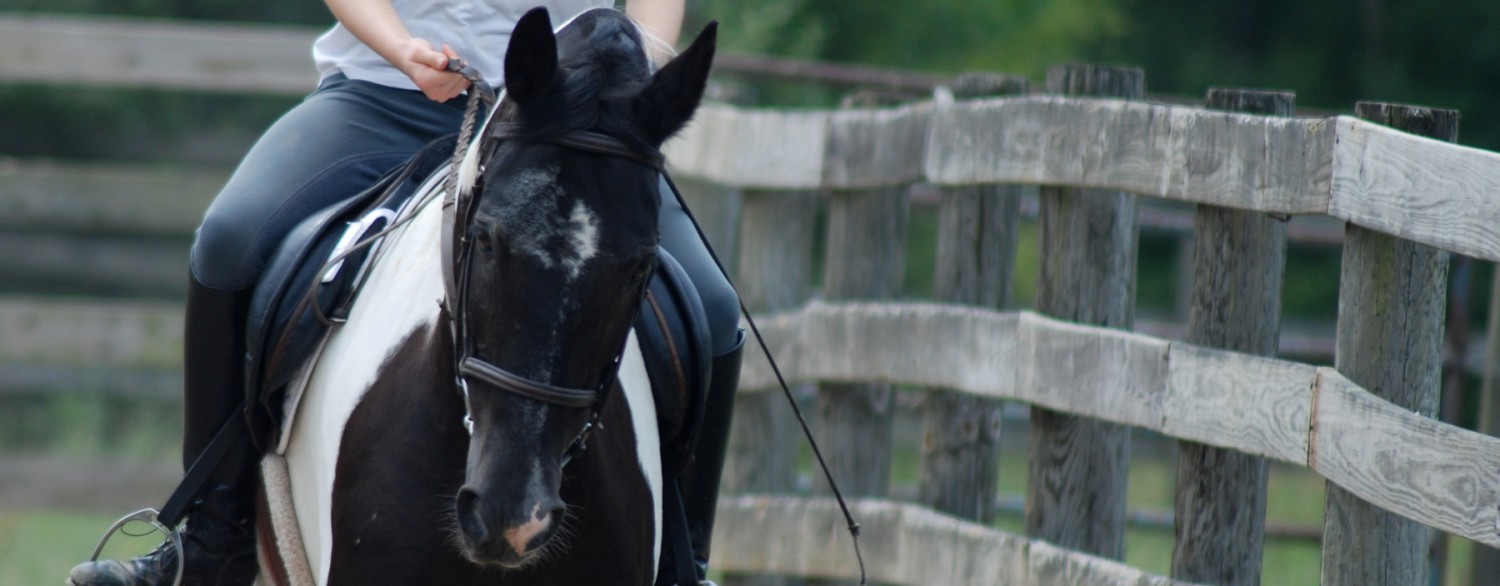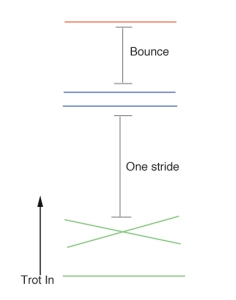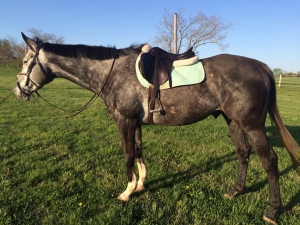Riders have two tools in their tool boxes. One is the effectiveness of the aids and influences, and the other is the knowledge of how patterns and exercises may correct and improve the horse.
Charles de Kunffy, USEF “S” Dressage Judge (Dressage Today, Feb. 2011)
My riding career focused heavily on the former tool for a long time. There were a few training exercises and grids and things I’d play with, but most of my previous trainers were very focused on the rider. Heels down, half-halt, shoulders back, get around the course, ride the dressage test, et cetera. That’s all great, but at a certain point, I needed more. I hit a seemingly common plateau at 2’9″ and training level dressage.
I’m finally breaking past it with some awesomely helpful exercises my trainer has been having me do with Tebow. So, here is one of the dressage patterns and one of the jumping grids we’ve done recently because they both ended with great a-ha moments.
Leg yield into canter transition
The goal of this exercise is to improve the canter transition, particularly its straightness.
- Leg yield from the track to the 1/8th line.
- Straight forward 2-3 strides.
- Leg yield from the 1/8th line to the 1/4 line.
- Canter.
The horse’s canter departure should start with the outside hind leg. Leg yielding into the transition sets up the horse so that he basically has no choice but to step off on the outside hind. This exercise ensures that my aids are timed correctly and are clear to Tebow; he can’t rush through the transition.
One stride to bounce
I love this grid. Love it. Tebow is long and he can get fast and flat when we’re jumping. This really gets him landing and thinking and listening instead of running through my aids looking for the next jump.
We started it out as a simple one-stride, then added the bounce element. We kept it low initially because it’s intentionally a little tricky, and unsurprisingly, the first time he sort of crashed through the bounce element. But that’s what grid work is for: letting the horse figure out the footwork for themselves. The second time was great, so we bumped up the height to get a bit more effort. Tebow responded wonderfully and got this awesome jump where he actually rocked back onto his haunches and got his shoulders up.
The challenging part about jumping Tebow is that he’s a good jumper and he knows it. He doesn’t always want to listen or put in a ton of effort, because he doesn’t need to. He’ll get over. I could let him gallop around on the forehand over a beginner novice/novice course and he’d get through it. But that’s not good enough anymore. I see a lot of bounces and one strides in our future in a variety of combinations, but this one in particular seems super helpful for getting him landing and sitting back and not rushing.
We do still talk about the aids and their effectiveness. Actually, that was another really useful moment in our last lesson – in the canter, my trainer explained that I had to half-halt as the mane was coming back towards me. That corresponds to the point in the stride when you can actually influence the gait – as the outside hind is landing. Figuring out when to do something had a pretty immediate impact on Tebow, which was really exciting.
Learning these new things is making Tebow a much better, more rideable horse. I’m really excited to see how the next few months go!



Tebow is looking amazing!!
LikeLike